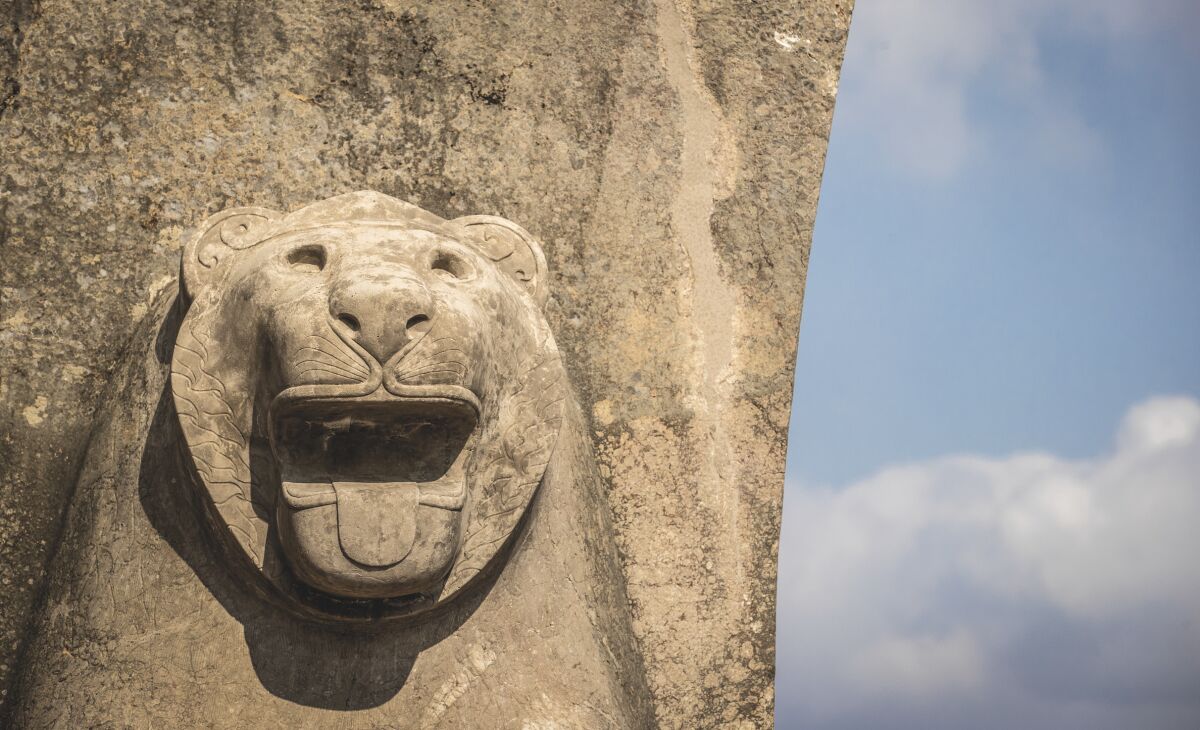The identity of the Hittites perplexed historians and archaeologists for centuries. Until relatively recently, many considered the Hittites to be a fictitious people mentioned only in the Bible. Some even used the Hittite question as evidence of the Bible’s fallibility.
The Bible refers to the Hittites 60 times and implies their kingdom was a significant second-millennium b.c.e. civilization. The problem, as claimed by skeptics, was that there was no archaeological or historical evidence to support their existence. Therefore, the biblical record, at best, could not be trusted or, at worst, was outright wrong.
Even by the beginning of the 20th century, with evidence of the Hittite civilization beginning to mount, certain scholars continued to either reject the presence of the Hittites entirely or believe that the Hittites could not have been more than a small and insignificant tribal entity.
Today, our understanding of the Hittites has changed dramatically. Thanks to large-scale archaeological excavations, as well as the discovery and successful interpretation of troves of clay inscriptions, we know more about the Hittites than ever. And the understanding we now have of the Hittites closely parallels their description in the biblical record.
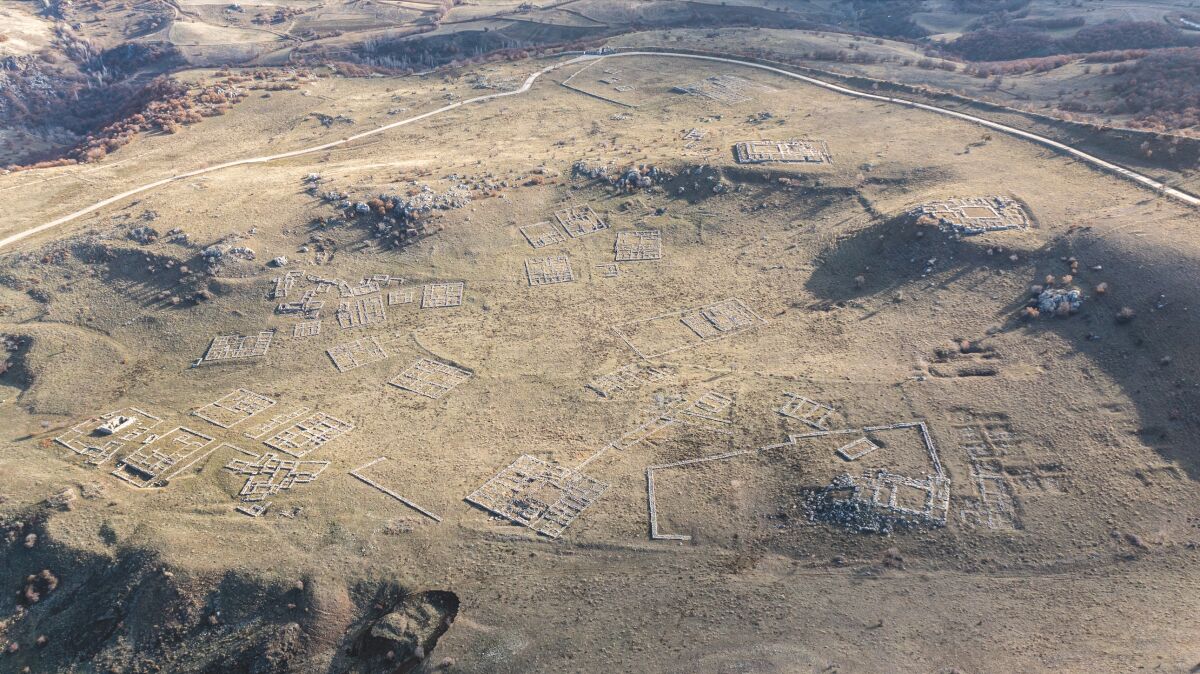
Who were the Hittites? How did one of the chief powers of the ancient world remain undiscovered for so long? What discoveries led researchers to accept the presence of this significant kingdom? And how well do the biblical record and archaeology align?
Let’s examine this enigmatic civilization.
19th-Century Naysaying
Until the late 19th century, the Bible stood alone as the only known historical work that discussed the Hittites in any detail. Hittitologist Prof. Gary Beckman wrote in his 2010 article “The Hittite Language and Its Decipherment”: “The Hittites of both the second and first millennium were largely forgotten by later peoples. They find no explicit mention in Classical Greek or Latin sources.”

For some early critics, this provided an opportunity to reject the Bible as a historical work. “[T]he casual references to the Hittites in the Bible have been used by the enemies of divine revelation to discredit the historical accuracy of the book,” observed William Wright in his 1882 thesis “The Hittites and the Bible.” Twenty-five years earlier, Oxford professor Francis William Newman referred to the Bible’s references to the Hittites as “unhistorical” and “not exhibiting the writer’s acquaintance with the times in a very favorable light” (A History of the Hebrew Monarchy).
Even in the early 20th century, as evidence for the Hittites was emerging, some scholars refused to accept their existence. Archaeologist John Garstang wrote in 1929 that “25 years ago [1904] some of the foremost orientalists did not believe in the existence of a Hittite nation” (The International Standard Bible Encyclopedia).

In 1909, Egyptologist Dr. Melvin Kyle recalled in The Hittite Vindication an earlier conversation with an esteemed colleague, writing: “In 1904, one of the foremost archaeologists of Europe said to me: ‘I do not believe there ever were such people as the Hittites ….’” (It seems likely this individual was Sir Ernest Alfred Thomson Wallis Budge, the famous Egyptologist. Read Dave Armstrong’s article “‘Higher’ Hapless Haranguing of Hypothetical Hittites (19th C.)” for more information.)
Evolutionary geologist George Frederick Wright noted how the Hittites were used not only as an example of an error in the Bible but also as proof of the general falsity of the book itself. He wrote, “[T]he numerous references in the Bible to this mysterious people were unconfirmed by any other historical authorities, so that many regarded the biblical statements as mythical and an indication of the general untrustworthiness of biblical history” (“The Testimony of the Monuments to the Truth of the Scriptures,” 1910; emphasis added throughout).

By the time of Wright’s missive, the narrative surrounding the Hittites had suddenly changed.
“All the doubts entertained in former times concerning the accuracy of the numerous biblical statements concerning the Hittites is now seen to be due to our ignorance,” Wright wrote. “It was pure ignorance, not superior knowledge, which led so many to discredit these representations. When shall we learn the inconclusiveness of negative testimony?”
Two years later, in 1912, Dr. Melvin Kyle observed that “no one is saying now that ‘no such people as the Hittites ever existed.’”
What caused this sudden volte-face?
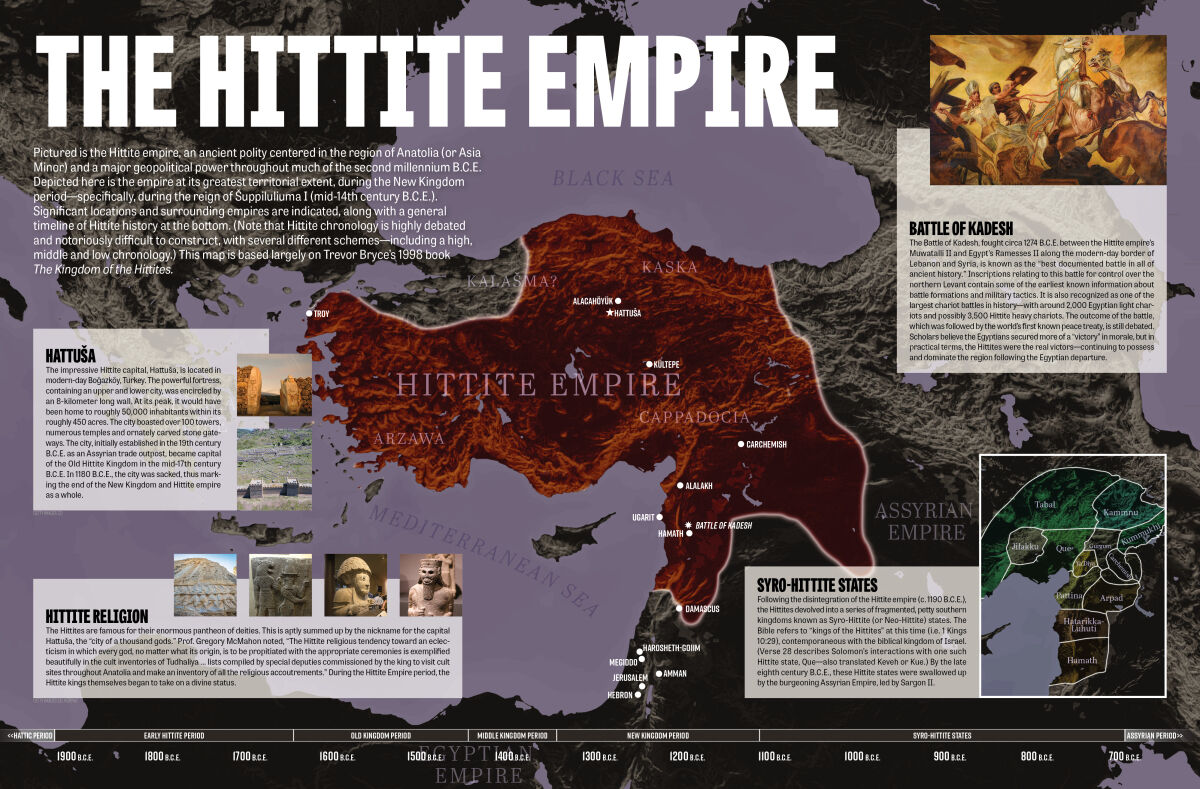
First Discoveries
Evidence of the Hittite kingdom first began to be uncovered in Turkey in the early-to-mid-19th century. In 1834, French archaeologist Félix Marie Charles Texier discovered monumental ruins in Boğazköy (central-northern Turkey). It wasn’t until 1886 that his compatriot Georges Perrot, an archaeologist who also excavated the site, first identified it as Hattuša, the Hittite capital.

Between 1893 and 1905, the site was probed by various archaeologists. They began discovering clay cuneiform tablets written in the Akkadian language and another, then obscure, language.
As the ancient ruins of Hattuša were being exposed during the 19th century, scholars were beginning to unlock a number of long-lost, ancient languages. This was famously spearheaded by Jean-François Champollion, who in the first decades of the 19th century utilized the recently discovered Rosetta Stone to decipher Egyptian hieroglyphs. That same century also saw the decipherment of various cuneiform-script languages, including Persian, Babylonian, Akkadian and Sumerian. Scholarship no longer needed to rely on early classical historians who wrote in understandable languages like Greek and Latin; the very archives of the ancient civilizations themselves could be read and understood. New frontiers of understanding were being opened.
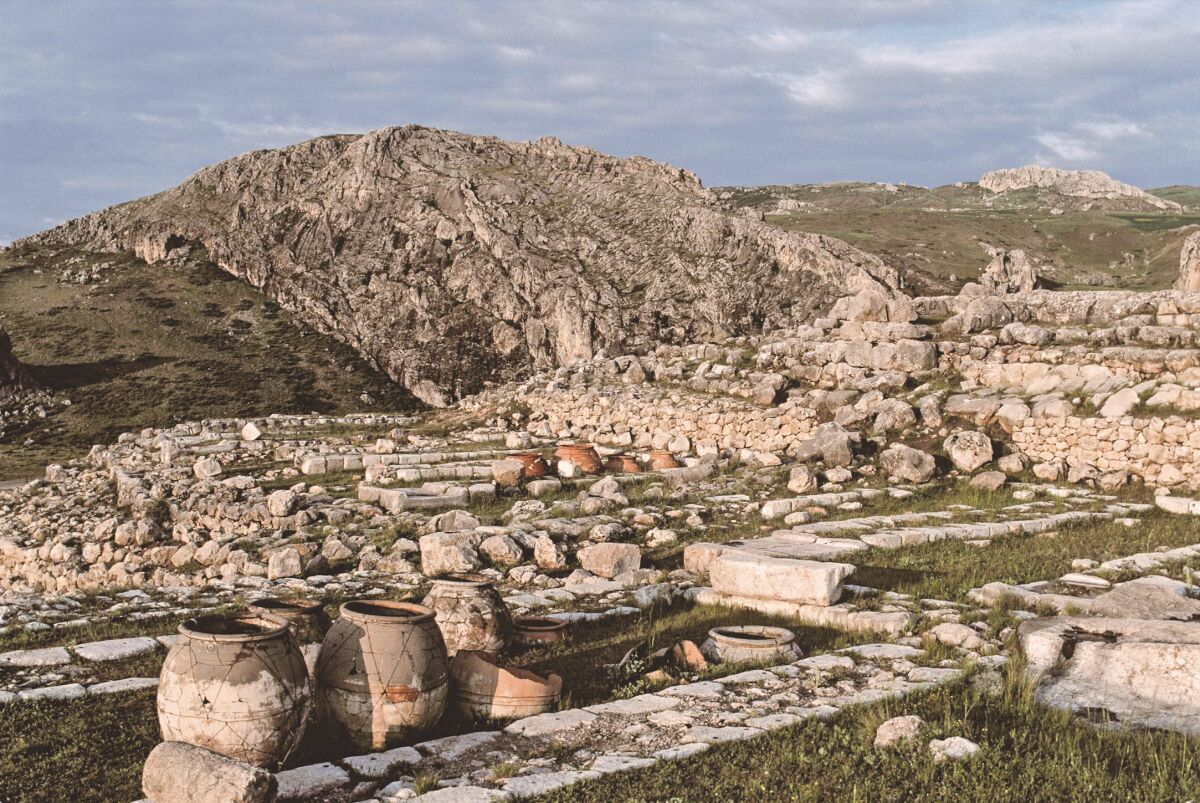
Texier’s discoveries were the first steps in unraveling the Hittite identity. Later, archaeologists such as Hugo Winckler and Kurt Bittel conducted a lot of the groundwork in uncovering the Hittite kingdom. As their discoveries emerged, there was naturally a significant amount of debate as to whether or not they could indeed be called “Hittite”—and whether or not newly discovered Egyptian references to a mysterious kingdom named “Kheta” could refer to the same thing.
Gradually, a consensus was being reached that the Hittites not only existed but were a major force in the ancient world, rivaling the power of Egypt and centered in Anatolia, modern-day Turkey. A major turning point in reaching that consensus occurred in 1906, with one of the most remarkable archaeological discoveries in history.
A Royal Archive
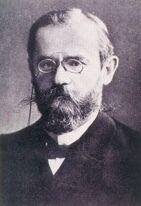
In 1906, Winckler and his team concentrated excavations on what appeared to be a royal fortress area at Hattuša. What they discovered that year astounded them and even now is difficult to grasp: a royal archive containing more than 10,000 inscribed clay tablets. The sheer quantity of tablets discovered at Boğazköy makes it one of the most impressive archaeological discoveries in history. But what did the tablets say?
Most of the tablets were written in Akkadian, the diplomatic lingua franca of the second millennium b.c.e.—a language that linguists could already interpret. But a significant percentage of the tablets contained an otherwise unknown language. Thanks to certain tablets that had already been discovered over prior decades, some steps had been made toward identifying the language. Given the use of the same cuneiform script as Akkadian, it was relatively easy to arrive at the phonetic sounds; the meaning behind them, of course, was another story.
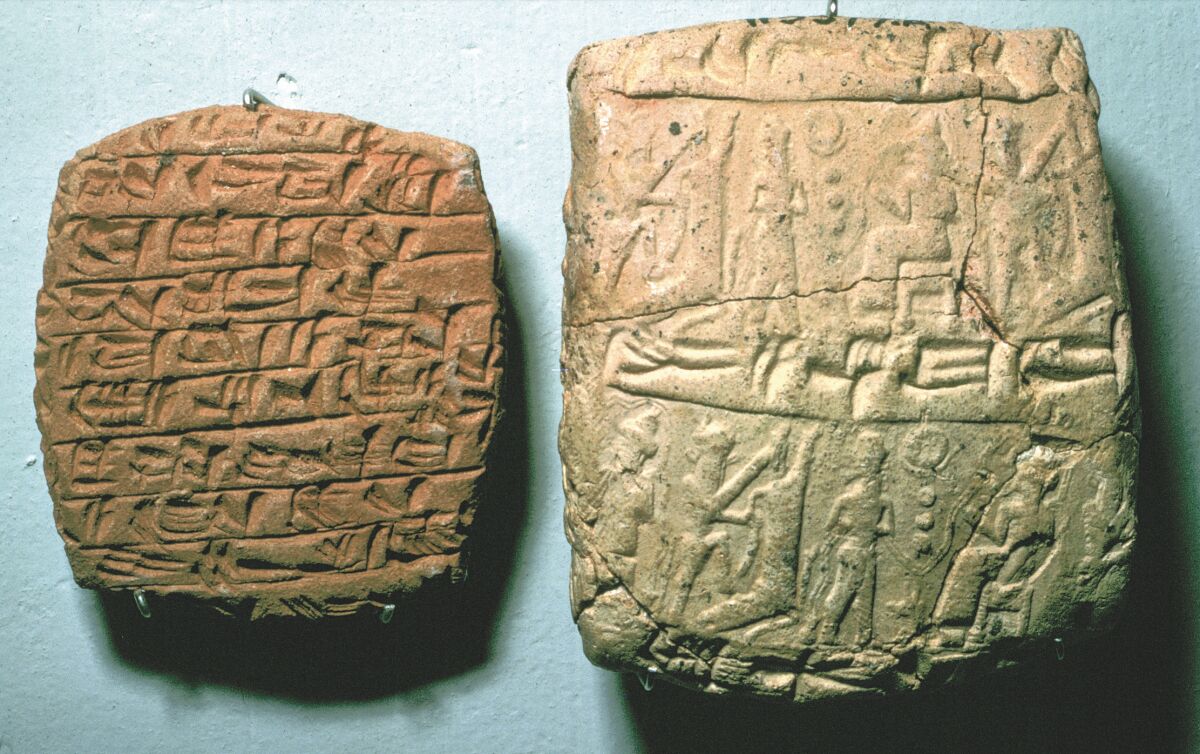
Professor Beckman wrote: “The first significant attempt to translate a Hittite text was made by the Norwegian scholar Jørgen A. Knudtzon, who … was not even aware he was dealing with Hittite” (op cit). These initial texts Knudtzon worked with were actually from the 14th-century b.c.e. el-Amarna archive discovered in Egypt in 1887—many of the 300-plus clay tablets constituted correspondence between the Hittite ruler and the pharaoh. Location names on the texts were readily identifiable, pointing to the region of ancient Anatolia.

In 1902, Knudtzon was the first to propose the Hittite language as Indo-European. Yet his early conclusions were rejected by his peers. “Sadly, the arguments of Knudtzon and his associates were not well received,” Beckman wrote. “The only prominent linguist to declare his belief in the Indo-European character of the language of the Arzawa letters was yet another Scandinavian, Holger Pedersen. It seems that even Knudtzon himself eventually lost faith in his decipherment” (ibid).
Following the discovery of the trove of documents from Hattuša and their subsequent analysis and presentation by a Czech professor named Friedrich Hrozny in 1915 (who had also initially discounted the Indo-European hypothesis), Knudtzon was proved to have been correct all along. By the mid-1920s, the identification of the Hittite language as an Indo-European script came to be widely accepted (unfortunately, years after Knudtzon’s death). This recognition of the nature of the text, in light of other Indo-European languages, enabled the Hittite language to finally be properly deciphered and understood. It is now recognized as the oldest of the Indo-European languages.
The story of the decipherment of the Hittite language is much like the discovery of the polity itself. Regarding Knudtzon’s initial identification, Beckman wrote: “What accounts for such a negative reception of a view which we now know to have been correct? Reluctance to follow Knudtzon was due to both historical preconceptions and to scholarly caution: A century ago no one expected to find an Indo-European language at home in ancient western Asia, and linguists consequently demanded overwhelming proof before accepting such a notion …” (ibid).
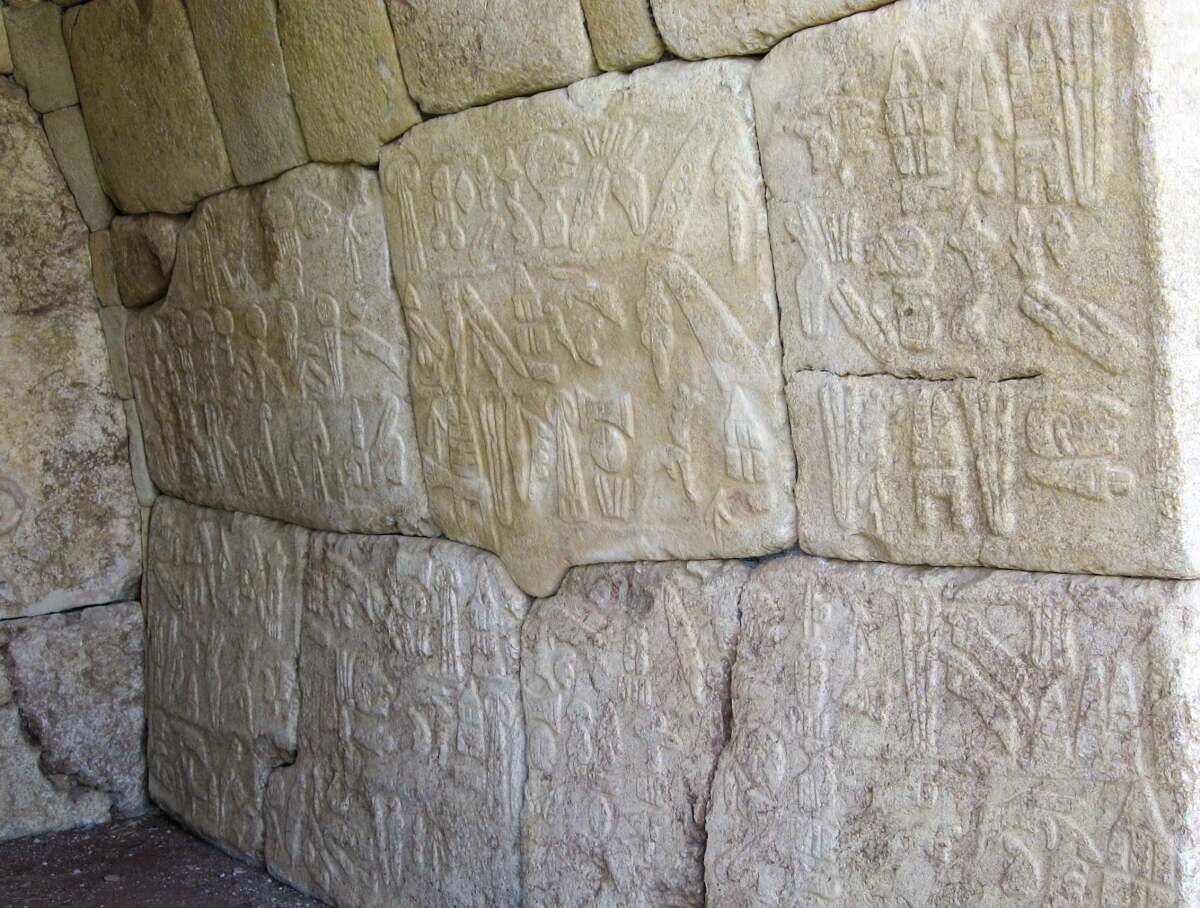
Much of our modern understanding about the Hittites derives from the deciphered trove of documents found at Hattuša, as well as from contemporary Egyptian and Mesopotamian hieroglyphic and cuneiform sources. Alongside this is another Hittite writing system, composed of hieroglyph symbols, known as “Luwian,” whose primary decipherment came in the 1970s.
(As we finalized this issue for the printer, breaking news emerged of the discovery of a brand-new language at Hattuša. As announced by the Çorum Provincial Directorate of Culture and Tourism, “an unexpected surprise was encountered in this year’s excavations. Hidden within a cult ritual text written in Hittite was a text written in an unknown language. Epigraphist Prof. Dr. Daniel Schwemer from the University of Würzburg in Germany reports that this language is identified as the language of the Kalašma land, likely located in the northwestern tip of the Hittite central region”—thus the new text is being labeled “Kalašma language.”)

Capital Worthy of an Empire
Winckler’s excavations at Boğazköy continued for another six years, further revealing the elaborate capital of a lost empire. What he found was truly sensational. Beyond an immense royal archive, he discovered an ancient city replete with city walls, temples, palaces, fortifications and gateways. To Winckler and his associates, there was no doubt that the ancient city of Hattuša was the capital of a vast and powerful kingdom.

The ancient city site is truly monumental, befitting that of a powerful empire. Hattuša is located in a steppe region, situated on a sloped plateau some 300 meters above the valley floor. The city is enclosed by a wall over more than 8 kilometers (5 miles). At its peak, the city would have been home to roughly 50,000 individuals living within its area of around 450 acres.
The capital is divided into an upper and lower city. The fortifications of the upper city contain more than 100 towers, as well as five monumental and ornately carved stone gates (including the famous, oft-depicted “Lion Gate” and a “Sphinx Gate”). Numerous temples are situated within the upper and lower cities, dedicated to the plethora of Hittite and (related) Hurrian gods and goddesses; the Hittites themselves called Hattuša a “city of a thousand gods.” Large-scale relief art covers rock faces at the site, depicting gods, goddesses, royalty and inscriptions.
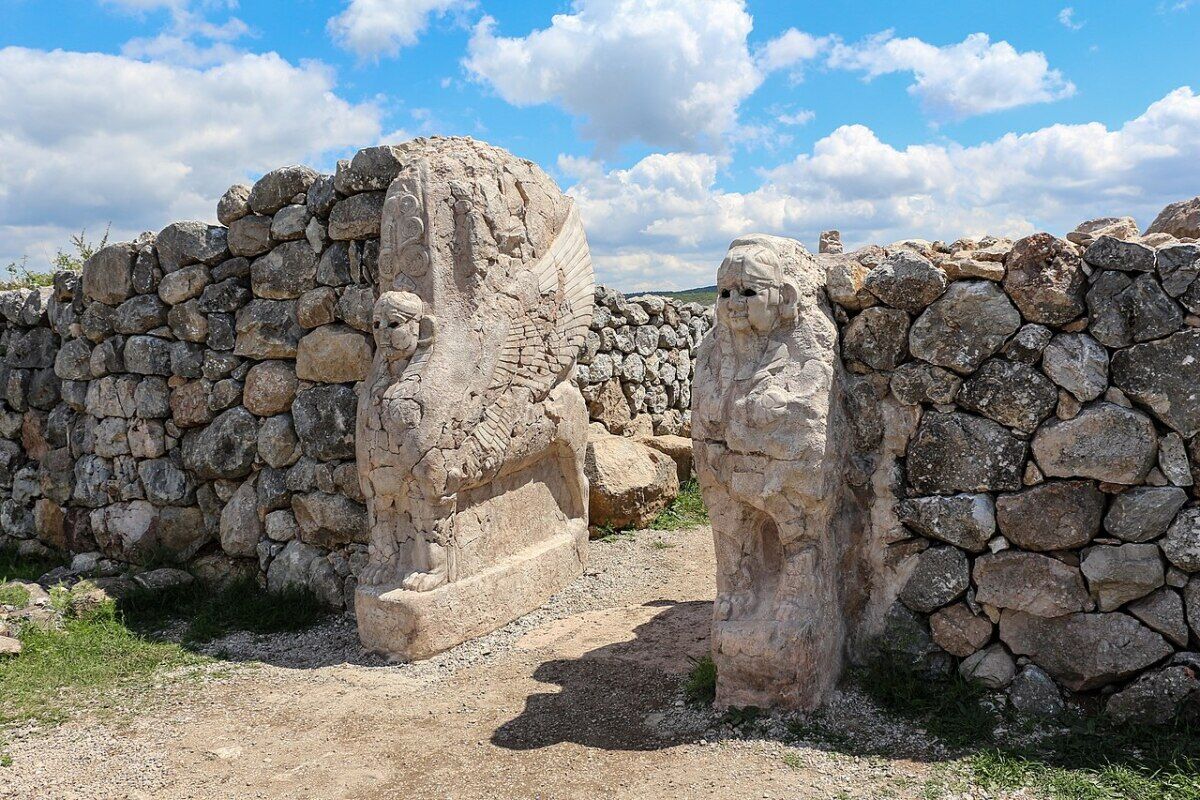
Who were these people?
Hittites at a Glance
The term Hittite comes from the English translation of the biblical Hebrew term for this people, חתי—a Hebrew word pronounced as Heti/Kheti. This term is connected to the patriarch חת, pronounced Het/Khet, mentioned in Genesis 10:15 and 1 Chronicles 1:13. The ancient Egyptian hieroglyph form of this name is almost identical.
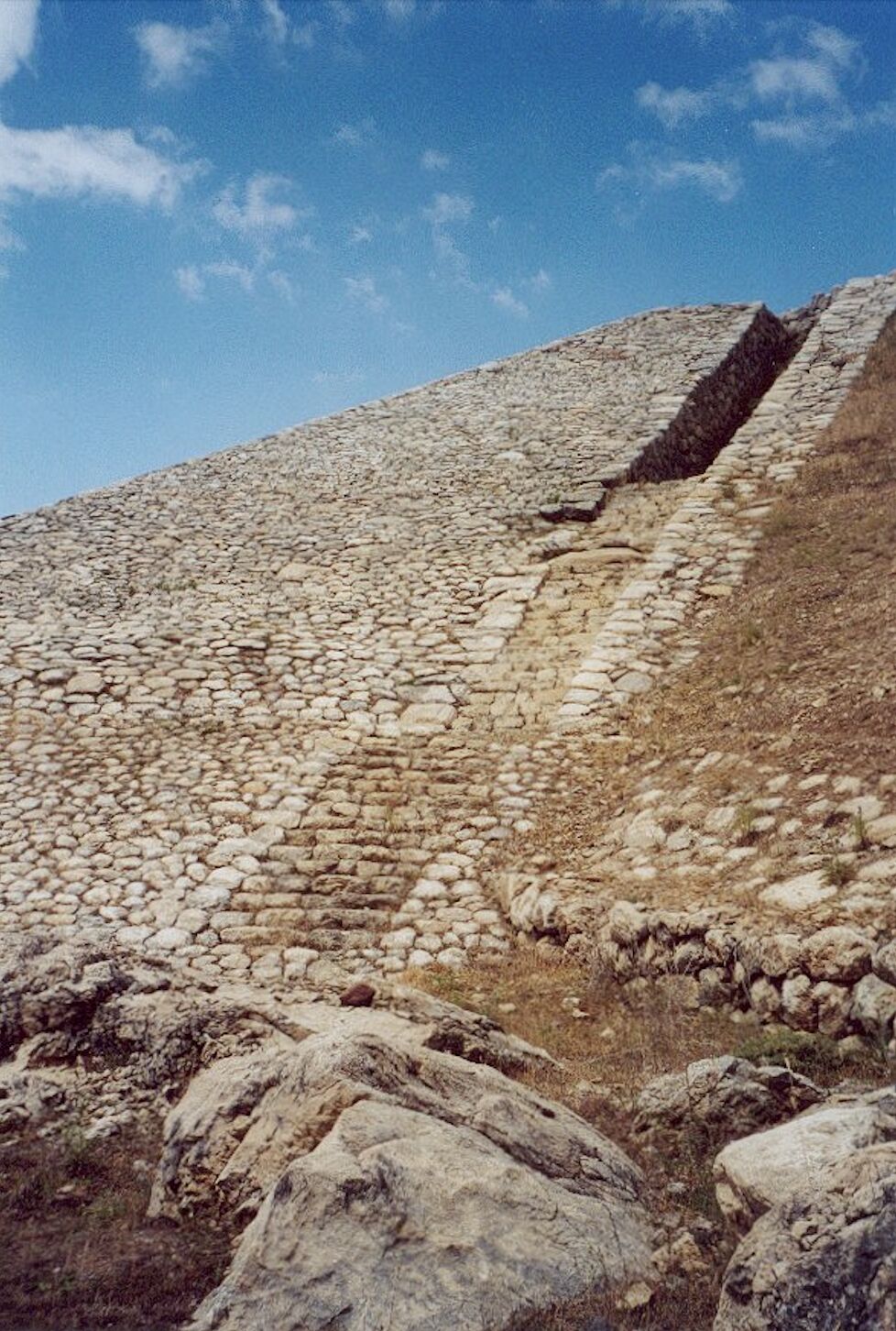
The rise and fall of the Hittite kingdom occurred over the course of the second millennium b.c.e. This Hittite history can be divided into the following general periods: a pre-kingdom, Early Hittite period (circa 20th–17th centuries b.c.e.), the Old Kingdom period (17th–15th centuries b.c.e.), the Middle Kingdom period (15th–14th centuries b.c.e.), the New Kingdom, or Empire, period (14th–12th centuries b.c.e.), and finally a devolution into more minor, “Syro-Hittite” states (or “mini-kingdoms”) that existed between the 12th century and early first millennium b.c.e.
These divisions follow remarkably close to the manner in which the Hittites are mentioned and named in the biblical account. During the pre-kingdom, Early Hittite period—the time of the biblical patriarchs—the Hittites are primarily referred to as “children of Heth,” “sons of Heth” and “daughters of Heth.” There is also an allusion to their territory at this time as one of nations, plural—rather than a highly unified kingdom (Genesis 14:1). Following the lifetime of Jacob (Genesis 49:32), and simultaneously with the rise of the Old Kingdom in the mid-17th century b.c.e., the Bible never again refers to these people as the children, sons or daughters of Heth—rather, with the collective title, Hittites. Then, by the time of King Solomon (at the start of the first millennium b.c.e.), the Bible describes his interactions with “all the kings of the Hittites” (i.e. 1 Kings 10:29)—aptly fitting the devolved Hittite empire into various Syro-Hittite states ruled by several minor kings.
The general sweep of Hittite history also pairs remarkably well with particular accounts of the Hittites in the Bible.

Biblical Patriarchs and the Early Hittites
Although modern secular research took a comparatively long time to come to terms with the existence of the Hittites, the history of this polity is weaved throughout the biblical account. Following an initial mention of the Hittite ancestor, Heth (great-grandson of Noah, through his son Ham—Genesis 10:15), the earliest mention of individuals with this patronymic appellation is during the days of the patriarch Abraham.
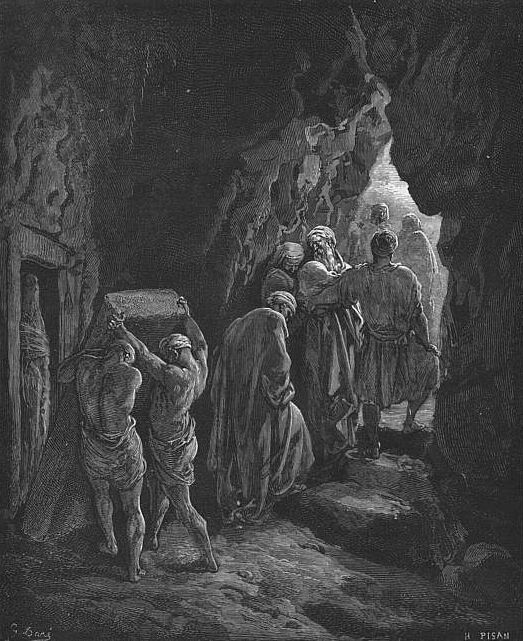
Genesis 15 describes God covenanting land to Abraham’s descendants from various territories, including land occupied by Hittites (verses 18-20). Genesis 23 documents Abraham purchasing land within Canaan from “Ephron the Hittite” for the burial of his wife Sarah. Various other personal interactions with Hittites are described. (On this topic, see our accompanying article, “Are Biblical Hittites in Canaan Anachronistic?”)
Our article “When Was the Age of the Patriarchs?” examines the chronological debate regarding when Abraham was on the scene. We concluded that the biblical account best fits the early second millennium b.c.e.—specifically, putting Abraham’s lifetime within the 20th to 18th centuries b.c.e. This fits within the early period of Hittite history, just prior to the start of the Old Kingdom period.
Naturally, the earliest periods of Hittite history are comparatively less attested to in the archaeological record. The late Tel Aviv University Prof. Aharon Kempinski summarized the early inhabitants of Hittite territory in his Biblical Archaeology Review article “Hittites in the Bible: What Does Archaeology Say?”: “We now have some basis for thinking that the Hittites … came from Europe via the Dardanelles … toward the second half of the [third] millennium [b.c.e.], they penetrated into the heart of the Anatolian plateau. There they mixed with the autochthonous (proto-)Hattic populations.”
Proto-Hattic, he explains, “refers to the pre-Hittite population in Anatolia, which was not Indo-European. In the scholarly literature, the name ‘Hattians’ or ‘proto-Hattians’ is used to refer to this indigenous population. It is from this that the Hittites received their name” (September-October 1979). The Hattians are known to have spoken another language, known as “Hattic,” that is both non-Indo-European and non-Semitic.
Prof. Gregory McMahon, in his 1989 Biblical Archaeologist article “The History of the Hittites,” wrote: “What we call Hittite civilization is a mix of the early Hattic culture with that of the Indo-European newcomers and, later, with the culture of the Hurrians of northern Mesopotamia.”
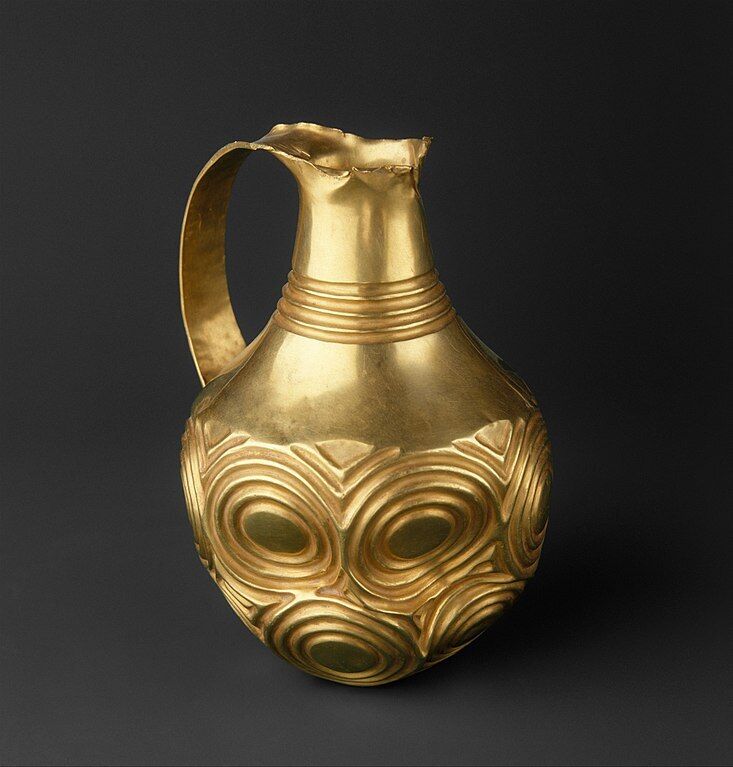
As such, it is the indigenous Hattians, rather than the better-known Indo-European Hittites, who could best be considered the direct descendants of the biblical patriarch Heth. Evidently, their name stuck for the territory. Trevor Bryce explains in his 1998 book The Kingdom of the Hittites that the ancient Hittites typically referred to themselves as “people of the land of Hatti” (also “Hatti-land”)—not necessarily the descendants of Hatti themselves.
Therefore, it is possible that the biblical “children of Heth,” with whom the patriarchs dealt, were themselves Hattians, literal descendants of Heth—while other more general references in the Bible to “Hittites” could refer either to the indigenous Hattians, to the Indo-European Hittites or to an amalgamation of both.
During the Middle Bronze Age (20th to early 17th centuries b.c.e.), the territory of Anatolia consisted of numerous small polities. Kempinski noted that, by this time, “the Hittites were already settled in most of the areas of central Anatolia where they established petty princedoms.”
Four early tablets, whose authorship is believed to date to the 18th century b.c.e., reveal a particular rivalry between two royal Hittite families—one controlling territory in northern Anatolia, and another in the south.
The more fragmented nature of the pre-kingdom, Early Hittite period fits a particular biblical account. Genesis 14 contains the famous narrative of the invasion of the Elamite king Chedorlaomer and his allies into the Levant, leaving a wide path of destruction, before they were beaten back by Abraham and his band of 318 men. One of these antagonist allies of Chedorlaomer was “Tidal king of Goiim.” This individual and his territorial entity have long been posited as Hittite (or, “proto-Hittite”). This is due to the linguistic parallel of his name to that of several later Hittite rulers, Tudhaliya. And despite the fragmentary records for this Early Hittite period, various scholars have postulated a “proto-Hittite king,” Tudhalia i, on the scene around this time, during the first half of the second millennium b.c.e.

Peake’s Commentary states, “Certain is the name of Tidal (Heb. Tidh’al), which appears in Ugarit as tdghl, [corresponding to the] Hittite Tudkhaliya and Tudkhul’a in the Spartoli texts …. This name is common in the Cappadocian texts of the 19th century b.c.e. and appears frequently among the names of Hittite kings and nobles in later centuries.” Professor McMahon wrote of this figure associated with the biblical Tidal: “Tudhaliya i is a shadowy figure whose existence is uncertain. He was originally proposed as the first king of this name because the name Tudhaliya was found at the beginning of one variant of the sacrificial lists as the father of one PU-šarruma … (kub xi 7)” (op cit).
The territorial title for this biblical Tidal/Tudhaliya would also be a good fit. The Hebrew word “Goiim” refers generically to “peoples” or “nations.” This would fit with the nature of the pre-empire, Anatolian menagerie of tribal entities during this early second millennium period. According to Prof. Kenneth Kitchen, this fits “the fractured nature of political power in Anatolia in the 19th and 18th centuries b.c.e. according to archives of Assyrian merchants in Cappadocia” (“The Patriarchal Age”).
Hittite Old Kingdom Period
The Hittite Old Kingdom is recognized as officially beginning during the mid-to-late 17th century b.c.e., with its progenitor, Hattušili i, consolidating control over wider Anatolia and the northern regions of Syria. (Note that there is some debate about him as the first king; an otherwise-obscure “Labarna” is sometimes credited—although some believe this simply to be a personal name of Hattušili i). A key text for understanding this earlier history of the Hittite Old Kingdom is the 16th-century b.c.e. Edict of Telepinu (catalogued as cth 19), a document consisting of 24 tablets and tablet fragments discovered among the Hattuša archives. The document enables scholars to reconstruct a timeline of early Hittite kings.
The Edict summarizes Hattušili i’s rule, in part: “Hattušili was king, and his sons, brothers, in-laws, family members and troops were all united. Wherever he went on campaign, he controlled the enemy land with force. He destroyed the lands one after the other, took away their power, and made borders of the sea.”
Hattušili i was succeeded by his grandson, Muršili i. The meteoric rise to power of the Hittite empire is aptly illustrated by Muršili’s circa 1590 b.c.e. campaign to Babylon and sack of the city, bringing an end to the Old Babylonian Empire (as described on the Edict, as well as the 14th-century Mesopotamian Chronicle 40).
Yet infighting marred the Hittite kingdom, particularly within the ruling class. The Edict reveals that Muršili i was assassinated by his brother-in-law Hantili i, with the help of Hantili’s son-in-law, Zidanta i. After Hantili’s death, Zidanta proceeded to murder the legitimate heir and establish himself on the Hittite throne. After a 10-year reign, Zidanta was murdered by his own son, Ammuna. When Ammuna died, his two sons Titiya and Hantili were apparently murdered, in the wake of which Huzziya i—either a lesser son or a usurper—became established on the throne. After a short five-year reign, Huzziya was deposed and exiled by his brother-in-law, Telepinu, and was later killed.
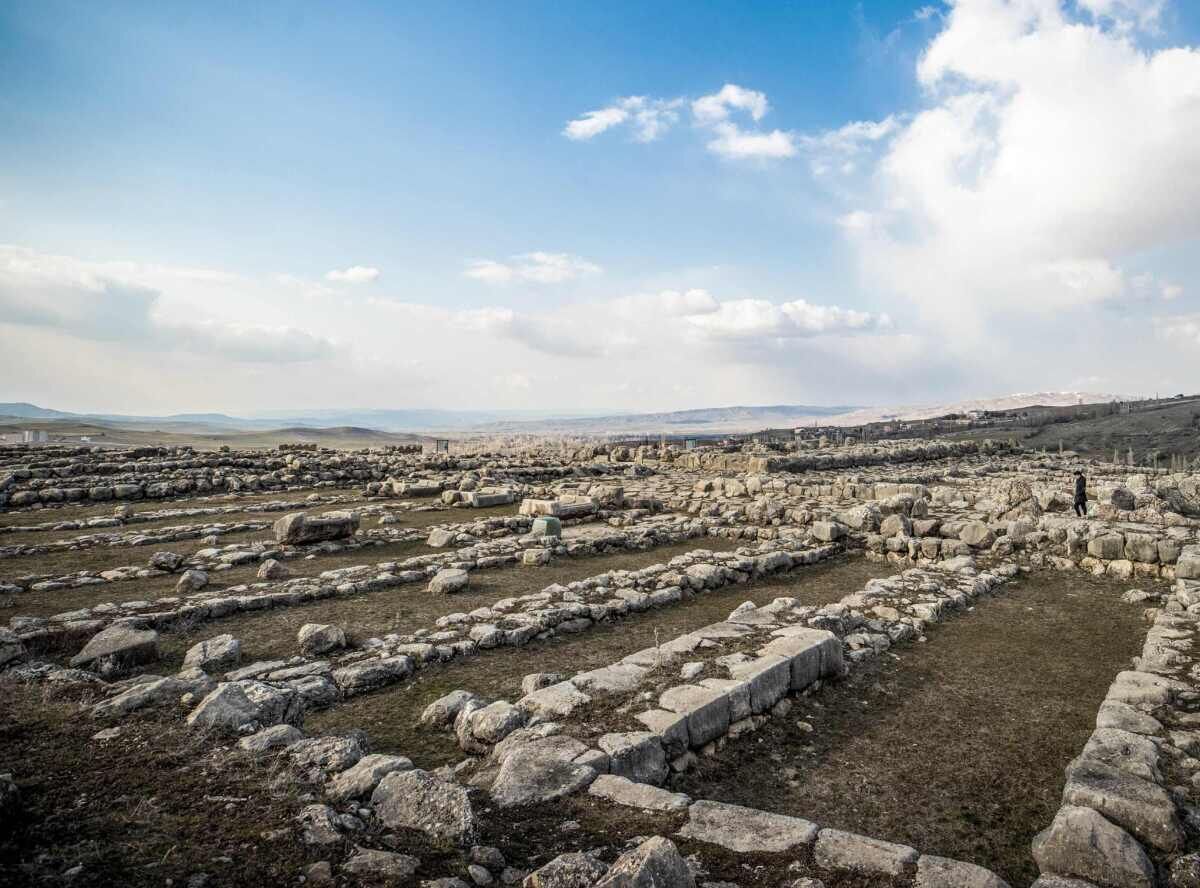
Exodus, Conquest and the Middle Kingdom Period
Following the rule of Telepinu, the Hittite empire entered a period of obscurity during the 15th to 14th centuries b.c.e. This period constitutes what is often referred to as the Middle Kingdom. One possible reason for weakness and obscurity during this period appears to be attacks from the north by a Black Sea shore population known as the Kaskians.
Perhaps not coincidentally, this same period aligns with the biblical chronology for the Israelite exodus from Egypt and the beginning of the conquest of the Promised Land. (See our article “What Is the Correct Time Frame for the Exodus and Conquest of the Promised Land?”) Land of the “Hittites” was included in the land promised to Abraham’s descendants (Genesis 15:20). In Exodus 34, God informs Israel: “[B]ehold, I am driving out before thee … the Hittite” (verse 11).
While records for the Middle Kingdom are scarce, some surviving texts, referred to as “Royal Hittite Instructions,” constitute directives for officials and officers during this period of upheaval. Professor McMahon noted: “These texts make clear the priority given to guarding the frontiers and keeping hostile neighboring lands under surveillance during the Middle Hittite Kingdom, a period of military weakness” (op cit).

From the mid-14th century b.c.e., one Hittite text, known as the Prayer of Arnuwanda i and Ašmunikkal to the Sun-goddess of Arinna (cth 375), highlights the desperation and direness of the political and social situation at the time. King Arnuwanda i and his queen mourn the loss of conquered cities and plead with the gods, reminding them how they have diligently served and cared for them.
Could there be a connection between this period of instability—particularly along the Hittite frontiers—and the period of the Israelite Exodus and conquest, which included such promised northern border lands? (Compare Genesis 15:18-21, Numbers 13:29 and Nehemiah 9:8.) Several times, the Hittites are mentioned at the top of the list of entities for the Israelites to conquer (e.g. Deuteronomy 7:1; 20:17). Joshua 1:4 also contains information about the territorial Hittite landmass along Canaan’s northern border.
In one unusual conquest account, an individual of Bethel betrayed an entry point to the city, leading to its destruction at the hands of the Israelites. He and his family were allowed to go free: “And the man went into the land of the Hittites, and built a city, and called the name thereof Luz, which is the name thereof unto this day” (Judges 1:26). Of this verse, Dr. Bryant Wood wrote: “Although no clues are given as to the location of ארץ החתים (‘eres hahittim) in this verse, the expression is the same as in Joshua 1:4, suggesting the area of Anatolia. The mid-14th century is about the time of the Hittite king Tudhaliya iii, when Hatti was being harried by attacks from the west and north” (“Hittites and Hethites: A Proposed Solution to an Etymological Conundrum,” 2017).

Joshua 11 lists Hittites as part of an alliance joined with “Jabin king of Hazor” to fight against the Israelites. The Bible describes their defeat at the hands of Joshua and the Israelites: “And they [Israel] smote all the souls that were therein with the edge of the sword, utterly destroying them; there was none left that breathed; and he [Joshua] burnt Hazor with fire” (verse 11; evidence of this fiery destruction has been found at Tel Hazor).
“And all the cities of those kings, and all the kings of them, did Joshua take, and he smote them with the edge of the sword, and utterly destroyed them …” (verse 12). Such verses take on new meaning against the backdrop of the much-diminished, Middle Kingdom Hittites.
Of course, as repeatedly accounted throughout the books of Joshua and Judges, the Israelites failed to carry out the conquest to its fullest intent (particularly to the north). “And the children of Israel dwelt among the Canaanites, the Hittites, and the Amorites, and the Perizzites, and the Hivites, and the Jebusites; and they took their daughters to be their wives, and gave their own daughters to their sons, and served their gods” (Judges 3:5-6). The same passage describes the various, remaining entities becoming a thorn in Israel’s side, “teach[ing] them war” (verse 2).
And so, by the mid-14th century b.c.e., the Hittite polity once again ballooned in size, reaching new heights of power in what is known as the New Kingdom period.

Hittite New Kingdom Period
This period, from the 14th to the 12th centuries b.c.e., is often referred to as the Hittite Empire period. During this apex period, kingship not only became hereditary but also took on an Egyptian-style, godlike status. Texts reveal Hittite citizens labeled their rulers as “my Sun.”

A key New Kingdom ruler was the mid-14th-century king Šuppiluliuma i, who significantly strengthened the borders of the Hittite empire. Yet during his reign, a tularemia outbreak devastated the empire, eventually killing the king and his successor. During this outbreak, the Hittites were attacked by the kingdom of Arzawa. The Arzawans were repelled by infected Hittite rams in the first documented case of intentional biological warfare.
Hittite expansion during the New Kingdom reached as far down as the southern Levant. Along this southern border of the empire, rivalry for domination took place between the two dominant regional powers of the time—the Hittite empire and the Egyptian empire (each within their own “New Kingdom” period). Caught in the middle was the comparatively weak Israelite nation, chronologically within the first half of its fraught judges period.
During this period, one of history’s most infamous battles took place between Egypt and the Hittites: the Battle of Kadesh. Criticism is sometimes leveled against a lack of mention of this pivotal event within the biblical account. But Israel was in a state of national anarchy during the judges period (Judges 21:25). Even so, there is rather dramatic (albeit circumstantial) biblical allusion to this monumental 13th-century b.c.e. event.

The Battle of Kadesh
In “On the Interpretation of the Kadesh Record,” Prof. Boyo Ockinga wrote: “No battle fought in antiquity is so well documented as the clash between the Egyptians and the Hittites before the city of Kadesh on the Orontes in 1274 b.c.e.”
The Battle of Kadesh was a struggle for control over the wider Levantine strip. Fought between Egypt’s Ramesses ii and the Hittite empire’s Muwatalli ii, this battle is often cited as one of history’s largest chariot battles, with—depending on the source—around 6,000 chariots fielded (perhaps many more), and as many as 70,000 combatants. This record-setting battle bears witness to some of the earliest-documented military formations and strategies, ending with the world’s first known peace treaty.

The Battle of Kadesh is well documented in Egyptian sources, in what is known today as the Kadesh Inscriptions. The Kadesh Inscriptions are recorded in two primary forms: the “Poem” and the “Bulletin.” The “Poem” details those involved in the battle—Egyptians, Hittites and allies. The “Bulletin” is more of a lengthy text that accompanies wall reliefs, repeated several times in various temple locations in Egypt.
Although these inscriptions form the primary understanding of the battle, given their Egyptian source, they are written from an Egyptian perspective and are naturally biased. The outcome of the Battle of Kadesh is still debated. A peace treaty was signed 13 years after the battle, but both sides claimed victory. Scholars believe that the Egyptians secured more of a “victory” in morale from the battle, but in practical terms, the Hittites were the real victors. “Under Muwatalli, the Hittites outmaneuvered the Egyptian army led by Ramesses ii, who was fortunate to escape with his life,” wrote McMahon. Further, “continued Hittite control of the area indicates that the victory belonged to the Hittites” (op cit).

It is unclear how much territory Egypt continued to control north of Canaan. There are hardly any Hittite references to the battle (except for circumstantial references found among the Hattuša archive). One interesting reference, however, comes in the form of an Egyptian document preserved in the Egyptian Papyrus Raifet and Papyrus Sallier iii—a letter from Ramesses to Hattušili iii scoffing at a complaint he had evidently received from the Hittite king regarding Egypt’s victorious depiction of the battle.
At this time in the biblical record (around the 13th century b.c.e.), we find a rather remarkable and unique account relating specifically to the north of Israel (the region closest to the location of the Battle of Kadesh). “And the Lord gave them [the Israelites] over into the hand of Jabin king of Canaan, that reigned in Hazor; the captain of whose host was Sisera, who dwelt in Harosheth-goiim. And the children of Israel cried unto the Lord; for he had nine hundred chariots of iron; and twenty years he mightily oppressed the children of Israel” (Judges 4:2-3).
Sisera’s force of “nine hundred chariots of iron” is the only significant biblical mention of chariots during the centuries-long judges period. This kind of incredible strength is ordinarily laughable—until the parallel historical context of the Battle of Kadesh is considered. (Not only that, but the very name of the captain “Sisera” is comparable to the Egyptian title Ses-Ra, “servant of Ra”—and Ra was the name of one of Egypt’s four chariot divisions at Kadesh. It is possible that this captain was a mercenary. Learn more, read “Sisera v. Deborah: Evidence for the Biblical Account”.)
The song of the prophetess and judge Deborah references the eventual Israelite victory over this regional Canaanite ruler. She makes an otherwise strange allusion to kings fighting just prior to this Canaanite, chariot-dominated oppression. “The kings came, they fought; Then fought the kings of Canaan …” (Judges 5:19).
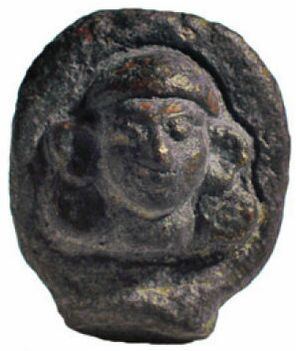
This biblical account fits perfectly with the setting of the great historical “battle of kings,” in which an unprecedented flush of chariots were introduced into the region and reportedly abandoned after battle.
Bronze Age Collapse
The century following the Battle of Kadesh saw the eventual wane and collapse of the Hittite empire (circa 1190 b.c.e.) and virtually all surrounding powers, including the Egyptians, Mycenaeans and even Mesopotamian powers. This enigmatic period is known as the “Bronze Age collapse.” There is a significant amount of debate over its cause, with various interpretations citing environmental catastrophes, the rise of the mysterious “Sea Peoples” and their conquests, or a combination of such factors.
What is fairly well attested is periods of drought and famine. Several 13th-century Hittite texts reference famines and grain shortages. During the mid-13th century b.c.e., a Hittite ruler wrote to Pharaoh Ramesses ii, “I have no grain in my lands.” The next Egyptian pharaoh, Merneptah, noted grain shipments being sent to “keep alive the land of Hatti” (circa 1210 b.c.e.).

This textual evidence pairs with recent research published in February this year, in which dendrochronology analysis of ancient Anatolian juniper trees revealed a sudden, severe, multiyear drought at the start of the 12th century b.c.e. This adds to research published in 2013 by scientists from Tel Aviv University and Germany’s University of Bonn, led by Prof. Israel Finkelstein, which demonstrated the same conclusions for the Levant. Their examination of pollen samples from sediment cores extracted from Israel’s Sea of Galilee and Wadi Zeelim showed that during the 13th to 12th centuries b.c.e., there was a sudden decrease in agriculture that required large quantities of water and a corresponding increase in the farming of dry-climate trees. The researchers identified this as the result of successive droughts within this period.
This fits well with another judges-period account in the book of Ruth. The pretext for this book is a multiyear famine “in the days when the judges judged” (Ruth 1:1). This famine was so severe that the Israelite individuals in the account were forced to “sojourn in the field of Moab.” (Read “Evidence for Ruth’s Famine—From Ancient Pollen?”)
The framework for general regional collapse in connection to drought and famine is made clear by the biblical, archaeological and agricultural evidence. Still, according to Prof. Eric Cline, drought and famine were only part of the reason for the fall of the Hittite and surrounding civilizations. “In my opinion, drought was just one of the numerous problems that the Hittites and others were facing at that time,” he wrote. “There was a cacophony of catastrophes that led not only to the collapse of the Hittite empire but also to the collapse of other powers as well. They include climate change, which led in turn to drought, famine, and migration; earthquakes; invasions and internal rebellions; systems collapse; and quite possibly disease as well. All probably contributed to the ‘perfect storm’ that brought this age to an end, especially if they happened in rapid succession one after the other, leading to domino and multiplier effects and a catastrophic failure of the entire networked system” (“Tree Rings, Drought, and the Collapse of the Hittite Empire”).
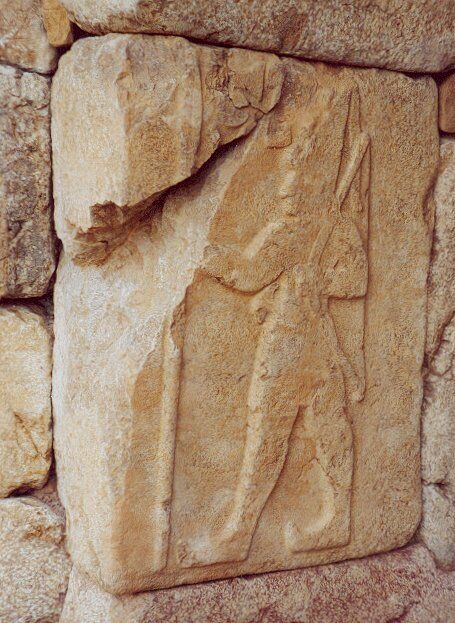
Ultimately, uprisings within central Anatolia culminated in the eventual destruction of the Hittite capital Hattuša, circa 1180 b.c.e., and the end of the New Kingdom period with its final king, Šuppiluliuma ii.
Hittites in the Israelite Kingdom Period
Though the empire itself had disintegrated, the biblical account contains several further references to Hittites. And the manner of such references from this point forward (early first millennium b.c.e.) is notable.
There are the individual references to Ahimelech the Hittite as well as the infamous Uriah the Hittite, one of David’s soldiers and the husband of Bathsheba. Also of note are references to Solomon’s dealings with “all the kings of the Hittites” (1 Kings 10:29), attesting to the multiplicity of fragmented, tribal Hittite leaders at the time. (This refrain is repeated in 2 Chronicles 1:17 and 2 Kings 7:6.) 1 Kings 9:20-21 and 2 Chronicles 8:7-8 describe Solomon requiring tribute from these Hittites, who became his “bondservants.”

Secular history attests to this status quo, with the Hittite entity having transformed into a disjointed, regional series of vassal “Syro-Hittite states” throughout the first part of the first millennium b.c.e. One such state, for example, was Que—1 Kings 10:28 highlights Solomon’s interactions with this state (variously translated as Que, Kue or Keveh).
“[T]he plural ‘kings’ fits very well with the nature of these states, which were not unified into one polity but consisted of several small kingdoms,” Professor McMahon wrote. “Assyrian documents dating to the first millennium b.c.e. refer to northern Syria as the land of Hatti, reflecting the continued presence of small Hittite states in the southern part of the former Hittite empire” (op cit). Eventually, these entities were absorbed into the rapidly expanding Assyrian Empire of Sargon ii, at the end of the eighth century b.c.e.
From this point forward, the Hittites became enveloped entirely in the obscure fog of history. So much so that the Bible alone continued to be the sole recognized preserve of textual evidence for this once-mighty kingdom.
The Hittites are a fascinating case study not only into the machinations of an ancient empire and its people but also the progress of scholarly research over the past two centuries—from initial doubt and ridicule to the eventual realization of remarkable discoveries fitting with the very scriptures so derided as fable. (For further investigation, read our accompanying article “Are Biblical Hittites in Canaan Anachronistic?” It examines the question of how well archaeological discoveries parallel the biblical account of Hittites specifically in the territory of Canaan.)
Now we have undeniable proof of the existence of this once-great empire. Again, in the words of Dr. Melvin Kyle: “[N]o one is saying now that ‘no such people as the Hittites ever existed.’”
